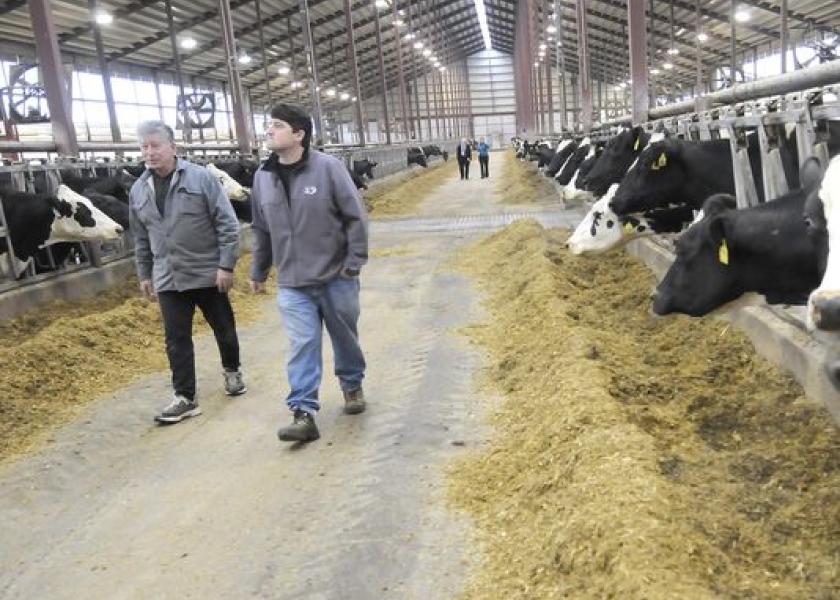Click Here for Dairy Worker Safety Training Resources

By Chuck Schwartau, Regional Extension Director, University of Minnesota Extension
I have often discussed items related to safety on the dairy farm and the importance of creating a “culture of safety” by way of regular training and setting good examples. What has not always been easy is to point farmers toward a good set of readily available training resources designed for dairy farms and their employees. I am happy to report that situation is changing.
A collaboration of the Upper Midwest Agricultural Safety and Health Center (UMASH), the Migrant Clinicians Network and the National Farm Medicine Center has now made available an excellent set of bi-lingual training lessons for dairy farms. Their offerings are available on-line in both English and Spanish so they can be used for any dairy employees.
Five lessons cover very important topics for dairy farms:
- Working Safely in the Dairy
- Working Safely with Cattle
- Staying Safe with Equipment and Machinery
- Workers’ Rights and Responsibilities: Safety and Health on the Farm
- Working Safely around Chemicals, Confined Spaces and Silos
Each lesson includes an instructor’s guide with background on the topic and PowerPoint slide programs with speaker’s notes so with a bit of review and study, most operators and managers could use the material in training programs on their farms. There are also handouts that can be given to employees for their personal reference, or posted in key places around the farm as reminders of safe working practices.
Each OSHA-approved lesson will take up to an hour so completing the series may be done over several different sessions with the workforce. Besides taking steps toward a safer workplace and safer workers, it may also pay dividends with lower insurance rates, so be sure to visit with your insurance agent about the prospect of lower rates upon completion of the course.
The course can be previewed at http://www.migrantclinician.org/seguridad . On that webpage is also where one can order the series’ PowerPoint presentations in either English or Spanish. The lessons will be sent to you via e-mail.
This is just one of several sources of safety training and information emerging today. Among the many sources available, here are just a few I have used.
The Upper Midwest Agricultural Safety and Health Center (UMASH), www.umash.umn.edu, focuses a bit more on health related issues of agriculture but safety topics are included, especially for livestock operations.
The Center for Dairy Farm Safety, http://www.uwrf.edu/CenterForDairyFarmSafety/Index.cfm, has numerous fact sheets and an OSHA approved training program that is now available for on-line use. This program includes all aspects of the farm that relate to dairy farming, including related equipment and chemicals.
National Farm Medicine Center, https://www.marshfieldclinic.org/nfmc/, has excellent resources for health and safety on the farm as well as guidelines for appropriate activities in which children should or should not be involved on the farm.
Gempler’s Tailgate Training Tip Sheets http://www.gemplers.com/tailgate-training-tip-sheets
are quick lessons printed in English and Spanish that can be taught in a few minutes which may be especially useful when you add new staff or some new procedure on the farm.
Even a simple web search for farm safety training materials can yield many more sources of training materials and providers. Among those providers are many commercial businesses willing to conduct the training for you. Whether you turn the training over to professionals (at a cost) or you conduct your own training makes little difference. Either way, the main thing is to simply “do it”. Start a safety program and continue to reinforce and strengthen it on a regular basis. Your dairy will be better off for the investment.
While you are at it, don’t forget to keep good records of the training offered, when it was conducted, and have all those attending sign an attendance sheet. Someday it may be great supporting evidence of your commitment to providing a safe workplace.







